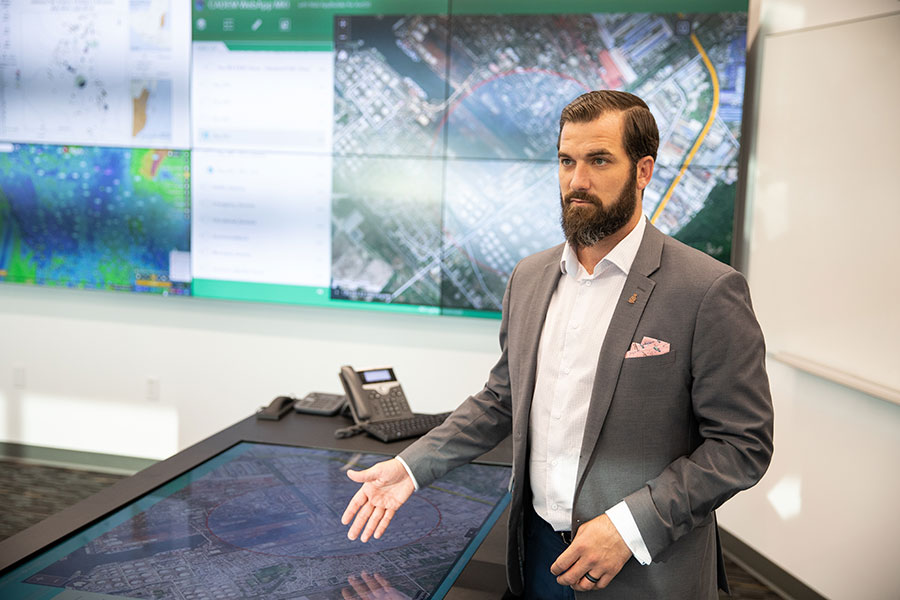Former student raises funds to increase diversity in the field
Sometimes, meaning well during a state of emergency doesn’t end up meaning much at all. Worse, it can interfere with the response, like it did during British Columbia wildfires in 2017.
That July, fires consumed 760,000 hectares of land of the Tsilhqot'in Nation, explains University of British Columbia researcher Jocelyn Stacey in an article for the Conversation. When RCMP arrived to enforce a provincial evacuation order, they disregarded the expertise, experiences and legal rights of the local Aboriginal government, which had developed its own emergency plans.
“As Tsilhqot’in leaders and citizens worked to contest and clarify ill-informed decisions by emergency responders,” writes Stacey, “the wildfires burned and communities were left vulnerable.”
Might things have gone differently if a broader diversity of perspectives been considered by provincial authorities in the first place? Further, how can one group effectively make decisions about emergency planning for another?
Those questions underlie the YEG Disaster Dash 2020. On Oct. 14, the fun run will help fund a new bursary to boost inclusion in the polytechnic’s Disaster and Emergency Management program. Ultimately, increased representation may also lessen the impacts of disasters on communities often disproportionately affected by them, but who might go unheard when planning for them.
How diversity can beat disaster
 Two things in particular got former NAIT Geographic Information Systems Technology student Chakanaka Zinyemba thinking about organizing the Disaster Dash.
Two things in particular got former NAIT Geographic Information Systems Technology student Chakanaka Zinyemba thinking about organizing the Disaster Dash.
One was participating in a similar event this summer, following a conference in the U.S. A post-secondary used it to raise money to help build disaster resilience in African American communities.
“As I was doing it I thought, ‘Why can’t we do something like that here?’” says Zinyemba, an Edmonton-based rapid response manager with the Canadian Red Cross.
Black Lives Matter, of course, also inspired him. Not only was the need for supporting diversity clearer than ever, but people were ready to act. Zinyemba brought the idea to Josh Bowen, whom he knew from working together during the Fort McMurray fires of 2016. Bowen also saw the need for change.
“There is nowhere near enough diversity of opinions and perspectives in most fields,” says the director of NAIT’s COVID relaunch team and an instructor for the Disaster and Emergency Management program. “I would say that in emergency management that’s also true.”
This is all the more important, Zinyemba adds, because of what he says is a lack of “race-based data” in Canada that helps inform responses and proactive efforts to strengthen communities before disaster strikes.
Not only was the need for supporting diversity clearer than ever, but people were ready to act.
“We need more people from these communities, from the community I’m a part of,” says Zinyemba, “to be present in this field and helping to make decisions bringing in the context and understanding that they have of their communities.”
That can start in the classroom, where emergency management skills are taught. There, those community members have a role to play in sharing experiences and knowledge with instructors and fellow students. “The education system also needs to look at itself – how and what is it teaching,” says Zinyemba.
“Does it include the histories of racialized communities? Does it include their perspectives? Hopefully, as we have more and more people coming in from different communities they say, ‘We need to change this curriculum. We need to change how we approach this.’
“It’s a long game that way.”
A first step forward

In this case, that game begins with a 5K run.
Given the continued need for physical distancing, participants will run the event on routes and start times of their choosing. Proceeds from entry fees will be pooled with other funds that Zinyemba is working to raise through donations outside of the run and in partnership with other organizations, such as the Council for Canadians of African and Caribbean Heritage.
Once raised, the $5,000 Diversity in Emergency Management Bursary is expected to be awarded twice a year to first-year Aboriginal or Black students, through 2023.
Zinyemba and Bowen are both ready and excited to run. They know it’s a first step, but they’re optimistic the bursary will encourage more people from racialized groups to see a future in emergency management, and to believe that they might have an influence on improving upon that work in their communities in ways outside can't, despite good intentions.
“We want to make sure that we’re removing barriers to entry into the field,” says Bowen, “because diversity of perspectives and experience is fundamental to everything that we’re trying to do.”
More support for diversity
The Disaster Dash is unique as a fundraiser for NAIT scholarships and bursaries, but there is no shortage of awards based on need and achievement that are directed at increasing diversity in programs across the polytechnic. Here are a few examples:
- Graham and Lorraine Adamson Bursary for students with Disabilities – $1,000 for students with a documented disability enrolled in the first year of any program at NAIT.
- Moly-Cop AltaSteel Ltd. Women In Trades Scholarship – $1,500 for female students in their final period in the Welder, Millwright or Electrician apprenticeship programs.
- Bell Media Inc. Entrance Award - Aboriginal & Visible Minority – $1,000, with priority given to Aboriginal students entering the Radio and Television program.